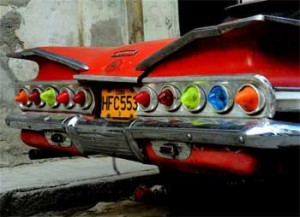Future Cars of the Past in Cuba
Osmel Almaguer

HAVANA TIMES — In a country of utopias and paradoxes like Cuba, we dream about what we can’t have, and we reject what would allow us to advance. As for the much-discussed issue of transportation, it’s the same situation, and its effects on our lives are as follows:
A high percentage of cars that drive on our streets have been in operation 20 or more years. They come from the Eastern Europe socialist era, and although they’ve been able to hold up fairly well, at this point they’re running more on the desire of their owners and/or users, as well as the creativity of mechanics.
Something worse is happening with the old American cars. These are the ones assembled mostly in the 1950’s. Strong but ancient, obsolete and gas guzzlers, these are another large part of the total number of cars in our country.
A small part of the vehicles in use belong to the social elite that today constitutes our bourgeoisie. These are modern cars brought from Europe and the United States. Their owners don’t drive around in Russian Ladas or Nivas, or in old American jallopies. They cruise along in Audis, Mercedes Benzes, Toyotas, etc.
Their owners are people who have probably have never ridden in buses, “camels,” bici-taxis or the old almendrones (US cars), although those in this latter group have fares of 10 or even 20 pesos, meaning that one has to be in a certain position to be able to afford their services.
The number of old US cars on the streets has increased in recent years. The cause? Urban public transportation is inadequate and ineffective, and most of its employees are negligent.
One can make a lot of money these days with an almendron. To purchase one, the price can reach or exceed 50,000 CUCs (about $55,000 USD).
The solution isn’t apparent in the short term. In fact, I’d say we can’t see a solution in the short, medium or long term. It’s simply not seen. Meanwhile, the numbers of buses are decreasing, the Soviet cars will one day become extinct, and for the moment, only the almendrones seem to be multiplying – though their fares haven’t gone down.





